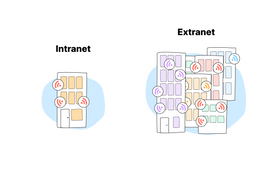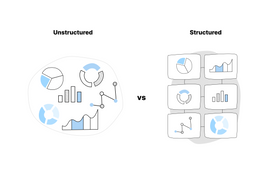Data Silos: Why They Are Problematic and How to Fix Them
Updated January 18, 2023

Information silos are collections of information held by a specific group that may not be accessible by other groups or individuals in the same team. Siloed data often occurs from one “segment” of a business to the next, as HR, administration, finance, and marketing teams all collect and use various pieces of data to complete their day-to-day tasks.
While siloed data might not seem problematic at first, isolated data frequently leads to barriers in information sharing and collaboration in the wider business landscape. Consistent data silos damage data integrity and make it harder for your business to succeed.
✶ Share information among teams effortlessly with Unleash
Defining Data Integrity: What Is Healthy Data?
Information silos refer to segments of data inaccessible from one department to the next in an organization, leading to a lack of efficiency and transparency in a team. Siloed data is the opposite of “healthy” data. Companies can define healthy data as information that is accessible and easily understood across the business landscape.
How Do Data Silos Occur?
Information silos and siloed data issues can occur for a range of reasons. Usually, these problems emerge over time, mirroring fragmented organizational structures. Some of the most common causes of data silos include:
- Issues with technology Data can’t easily pass between departments in an organization if the technology used for collecting and storing data is fragmented. Integrations between high-quality applications and software solutions are essential to healthy data.
- Organizational change Growth or changes in the structure of an organization can often lead to problems with the management of data. There may be too many departments or team members for business leaders to keep track of the flow of data effectively.
- Issues with company culture Poor company culture can lead to gaps between different members of staff in a team. Sometimes, this can cause groups like marketing or sales to keep data to themselves, rather than sharing their insights with the rest of the group.
✶ Software solutions like Unleash make integrations between apps easy
How Is Data Quality Affected by Data Silos?
One of the major issues caused by data silos is a problem with data quality. Data is among the most valuable assets any business has, making it easier for teams to make informed and confident decisions. With data, you can understand your partners and customers and improve your chances of long-term business success.
Working with data silos means you’ll have fragmented pieces of information which might not provide a complete view of your business environment. If your data isn’t in sync, you may even see conflicting insights when cross-checking information from various sources.
Can Data Silos Destroy Businesses?
If you’re new to dealing with data, you might wonder, “why are data silos problematic?” As mentioned above, a lack of access to consistent and accurate data is one of the most common issues associated with siloed information. However, other problems can also emerge, such as:
- Incomplete views of the business If you can’t consolidate your data into a comprehensive overview of all business operations, then you can’t gain a complete view of the business. Trying to manage a business with isolated data is like trying to put a puzzle back together without knowing what it should look like.
- Cultural issues When data silos are evident in business, teams often end up working independently, using their own data and failing to collaborate with their colleagues. This can lead to everyone in a business working with different strategies and a misaligned approach to business operations. Cultures of transparency and trust are difficult to maintain with data silos.
- Poor business performance Data silos make it difficult to track customer journeys and maintain a strong view of your company’s operations. This means you don’t have the insights required to optimize your company or your teams. It could also mean you end up giving your customers a less-than-perfect experience.
How Can You Fix the Problem of Data Silos?
Information silos often happen when companies have various sources of information isolated from one another. This means many business leaders often assume the answer to data silos is simply importing and exporting databases from one environment to another.
However, the reality is that the constantly changing nature of data requires a more focused central approach to eliminating data silos. In order to do this, companies should do the following:
- Use integration software Using integration software and APIs to connect disparate systems in a workforce is one of the best ways to reduce data silos. Software solutions such as Unleash sync all your resources into one place, making searching for information easy.
- Leverage all-in-one environments Leveraging all-in-one cloud environments where you can connect multiple tools in one space can reduce the need for integrations. This also minimizes the risk of data silos by keeping information flowing in one space.
- Create a collaborative culture Commit to helping your team members bond and collaborate more consistently so that they’re constantly sharing information and insights. A culture with a strong focus on knowledge sharing will reduce data silos.
How to Avoid Data Silos in the Future
As businesses continue to become increasingly reliant on data in a digital world, healthy data is essential to improving a company’s chances of long-term success. Organizations must provide decision makers with 360-degree views of healthy data to achieve their goals. Eliminating data silos may be the key to success for many businesses.




